Posts Tagged ‘disclosure’
The Embryo Bank Dilemma: Reviewing the Issues, Historical Perspectives and Offering Potential Solutions

Craig R. Sweet, M.D
Reproductive Endocrinologist
Practice and Medical Director
Embryo Donation International
Introduction
In my last blog, “Why Creating ‘McEmbryos’ is Just Plain Wrong,” I wrote about my concerns regarding the creation of an embryo bank at a California clinic. In this follow-up segment, I want to re-state the issues, discuss the past history of embryo banking in the U.S., provide a list of recently written thoughtful blogs on the topic, offer possible solutions to the dilemma and discuss where we should go from here.
A “Reader’s Digest” version
California Conceptions (CC), as outlined in Alan Zarembo’s L.A. Times article apparently combined donor eggs with donor sperm and divided the resulting embryos among a number of embryo recipients. This process is commonly called a “split or shared donor/donor cycle” but was called “embryo donation” by CC. Any embryos remaining, after the recipients received their allotment, would be cryopreserved and owned by CC.
The road was paved with good intentions
I feel that CC was really trying to offer a cost-affective alternative for patients and that its true intent was to keep the size of its embryo bank as small as possible. Even with good intentions, however, it is quite likely that the embryo bank will grow. In addition, to sanction the creation of a small embryo bank will almost certainly result in the creation of larger embryo banks across the country. These banked embryos for commercial use are what I called “McEmbryos.” There also needs to be a clear distinction between embryo banking for commercial use and the process of banking one’s own embryos (i.e., collecting through multiple IVF retrievals) to be used by individuals to build their families in the future.
I still have three main concerns:
- I do not feel that embryo banks are appropriate and could result in a plethora of unintended consequences.
- I feel that corporations, businesses or physician practices should not own embryos.
- Lastly, the process of a “split or shared donor/donor cycle” should be called “embryo creation” or, at the very least, not called embryo donation.
This has happened before
An article by Gina Kolata in the New York Times in 1997 revealed that “ready-made embryos” were already being made for “adoption.” Columbia-Presbyterian and Reproductive Biology Associates were named in the article as providing “premade” embryos to patients. According to the article, most of the embryos were created when donor egg recipients backed out of the process, but the egg donors still underwent the egg retrieval; their subsequent retrieved donor oocytes were combined with donor sperm. Lori B. Andrews, a professor of law at Chicago-Kent College of Law, was quoted as having concerns about the supermarket approach to embryos while the clinicians thought it wasteful to not retrieve and fertilize the donor oocytes if the egg donors were ready for the retrieval.
In 2007, Center for Genetics and Society Senior Fellow and UC Hastings Law Professor Osagie Obasogie wrote an op-ed for the Boston Globe about a Texas center that had created an embryo bank. He was concerned about the “Wal-Martization” of human embryos, a phrase similar to my “McEmbryos.”
In November of 2012, in response to the N.Y. Times article, Jessica Cussins of the Center for Genetics and Society wrote an excellent blog on the topic, also following-up on the 2007 article by Professor Obasogie. The Texas center was eventually closed and was the subject of an FDA investigation, which eventually found that the creation of an embryo bank did not fall under FDA jurisdiction. John Robertson, Esq., wrote an excellent commentary on the topic in the Bioethics Forum in that same year.
Embryo banks have come and gone, garnering media attention and criticism and I believe it is finally time to set some ethical standards of care about them.
How New York decided to handle the embryo bank issue
 Almost five years ago, the state of New York issued regulations for tissue banks and nontransplant anatomic banks, addressing the potential of creating embryo banks:
Almost five years ago, the state of New York issued regulations for tissue banks and nontransplant anatomic banks, addressing the potential of creating embryo banks:
Embryos shall not be created for donation by fertilizing donor oocytes with donor semen, except at the request of a specific patient who intends to use such embryos for her own treatment. [NYS 52-8.7(h)]
Embryos were not to be created to store in embryo banks but only created at the behest of a specific patient and subsequently owned by that patient. Simply modifying the statement above to include “… such embryos for his/her own treatment,” would address the issue adequately, with the sentence potentially used by various organizations as they hopefully set ethical standards of care.
Potential consequences to the creation of an embryo bank
I have been called an alarmist by some for bringing up what I feel are the following potential dangers of having embryos banks in the U.S:
- If a small embryo bank is allowed to flourish, then large embryo banks will most certainly follow.
- Poorly designed and reactive legislation may be created on the state or national level as there may be further calls to regulate what are perceived to be “unregulated IVF facilities.”
- “Personhood” advocates may become further emboldened to win personhood for the embryos to protect them from becoming “McEmbryos.”
I don’t think these unintended consequences are that farfetched and need to be considered carefully should embryo banks continue unchecked.
My reluctant decision to come forward
 About the last thing I wanted to do was to comment on another reproductive endocrine practice comprised of caring staff members dedicated to the care of their patients. I have been criticized for taking such a stand and accused of doing this purely for competitive reasons. In reality, I have been working with the American Society for Reproductive Medicine’s (ASRM) and the Society for Assisted Reproductive Technologies, (SART) since October of 2011, trying to elicit a set of guidelines prior to the writing of my blog. I far preferred to stay out of the limelight and let the “powers-that-be” decide what should be done next. When the L.A. Times article was published, it de-emphasized the ethical issues and potential unintended consequences of the CC embryo banking practice, so I felt I had no choice but to bring the topic up front and center.
About the last thing I wanted to do was to comment on another reproductive endocrine practice comprised of caring staff members dedicated to the care of their patients. I have been criticized for taking such a stand and accused of doing this purely for competitive reasons. In reality, I have been working with the American Society for Reproductive Medicine’s (ASRM) and the Society for Assisted Reproductive Technologies, (SART) since October of 2011, trying to elicit a set of guidelines prior to the writing of my blog. I far preferred to stay out of the limelight and let the “powers-that-be” decide what should be done next. When the L.A. Times article was published, it de-emphasized the ethical issues and potential unintended consequences of the CC embryo banking practice, so I felt I had no choice but to bring the topic up front and center.
Others responded to the discussion
Several other infertility professionals discussed the ethical issue in articles or blogs in the weeks following the L.A. Times piece. Excluding those that simply summarized the situation, I listed below what I think are some of the better blogs:
Supporting embryo banking
- Marni Soupcoff, Esq., “Marni Soupcoff on the sale of fertilized embryos: How much for the blastocyst in the window?”
Neutral to embryo banking
- Julie Shapiro, Esq., “Custom Made or Off The Rack?”
- Carole C. Wegner, Ph.D., “Embryos for Donation: Where are the ethical boundaries?“
- Elizabeth Swire Falker, Esq., “The Bizarre World of Embryo Banking. Where My Motherhood and Morality Meet”
Against embryo banking
- Andrew Vorzimer, Esq., “Get Pregnant With Built On Spec Embryos Or Get Your Money Back!”
- Jessica Cussins, B.A., “Embryos for Sale: ‘When You Want Them, How You Want Them, or Your Money Back”
- Sara R. Cohen, LL.B., “It’s not about the Money: Why we are So Concerned about a California IVF Clinic’s Anonymous Embryo Program”
- Mikki Morrissette, “Creating Embryos To Sell“
My thanks to all of the authors for taking the time to discuss the issue in an open forum.
Proposed remedies to the current dilemma
From the beginning, I have been offering remedies to the embryo bank dilemma. Although far be it from me to tell CC how to run its business, these are a few ideas I had to offer:
Only patients should own embryos-
No organization, corporation or physician practice should own embryos except in the most extreme circumstances, such as embryo abandonment. With embryo donation, it is most appropriate that the donor facility simply holds the embryos, with the donors still being able to request the return of their embryos, up to the point of transfer into the recipients, should a catastrophic occurrence take place, Attorneys refer to this as being a guardian, a conservator, or a temporary holder of goods. When presenting at the American Bar Association Family Law Section Spring conference in April of 2012, many of the attorneys there strongly supported the concept of conservatorship of the donated embryos over facility ownership.
If the embryos are returned to the donor, it seems appropriate to ask the donors to reimburse the embryo donation facility for all reasonable fees expended in originally obtaining the donated embryos and returning them to the donors. We have been running our embryo donation program this way for over 12 years and we encourage others to do the same.
Excess cryopreserved embryos could be owned by patients-
As best as I can surmise for CC, their business model is to recruit a number of embryo recipients and then transfer 1-2 donor/donor embryos into each recipient. I suggest that any remaining embryos be owned by one or more of the recipients and the entire cycle should not move forward until at least one patient agrees to take the extra cryopreserved embryos, should any exist. Extra charges could be levied to those that secure the remaining embryos. In this way, no embryos remain to create an embryo bank and the CC business model remains essentially intact.
Renaming the process-
The combination of donor sperm with donor eggs and then calling them donated embryos does not fit with the ASRM definition of embryo donation (Ethics Committee of the ASRM, 2009). Embryo creation is a far better term or “shared or split donor/donor cycle” is perhaps even more appropriate. Calling such embryos donated embryos debases the amazing gift that embryo donors provide when donating their embryos.
Who should set the standards?
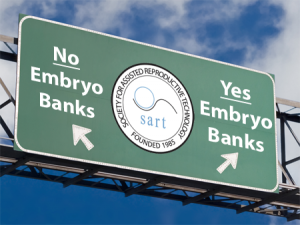 SART has reviewed the concerns stated in my previous blog but I don’t think it yet has arrived at a
SART has reviewed the concerns stated in my previous blog but I don’t think it yet has arrived at a
conclusion. My understanding is that the ASRM Ethics Committee is to take up the topic during the early months of 2013. As our main guiding societies, I believe they need to take the lead, develop position statements and provide ethical standard of care guidelines for all practices to use.
Once ASRM and SART have provided ethical standard of care guidelines, I will next request that the
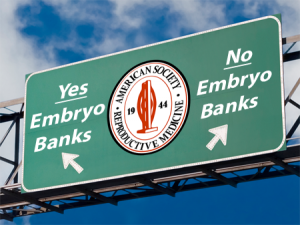
Canadian Fertility and Andrology Society and the European Society for Human Reproduction and Embryology (I am a member of both) consider the topic and respond with their own recommendations if they see fit.
It is not out of the realm of possibility that numerous societies could collaborate to form a consensus, such as they did when they banned the support and publication of human reproductive cloning research.
Summary comments
So where are we now on this dilemma? SART has discussed the topic but summary statements are pending. The ASRM Ethics Committee will soon meet, with the embryo bank topic apparently on the agenda. Assuming the Ethics Committee feels the topic has merit, I am uncertain how long it will take for them to release a position statement. I am hopeful that “the powers that be” will be attentive in finding a compromise that will allow CC to continue to offer their skilled reproductive services while preventing the formation of an embryo bank, no matter the size, further clarifying who should own embryos as well as the definition of embryo donation as it pertains to the current situation.
I don’t know about you but I don’t really like the idea of “McEmbryos,” or the commodification and “Wal-Martization” of human embryos. Patients should own them and decide their destiny. I am hopeful that our guiding societies will do just that – guide us on this sensitive and important topic.
Special thanks:
Thanks to Grace Centola, Ph.D., for helping to find the New York State statutes pertaining to embryo banking.
Thank you to Jessica Cussins for her blog on the topic, the reference by Professor Obasogie and her followup on the now closed Abraham Center for Life.
References:
Ethics Committee of the American Society for Reproductive Medicine. American Society for Reproductive Medicine: defining embryo donation. Fertil Steril. 2009 Dec;92(6):1818-9
.
Why Creating “McEmbryos” is Just Plain Wrong
Introduction
Recently, Alan Zarembo of the L.A. Times released a story alleging that California Conceptions was combining donated eggs with donated sperm and called them “donated embryos.” If there were leftover cryopreserved embryos, ownership of the embryos apparently went to California Cryobank (CC). If true, this is an egregious assault on reproductive ethics.
Defining embryo donation
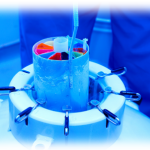
About one-third of all patients undergoing in vitro fertilization (IVF) will have excess embryos to cryopreserve. About one-half of these will not be used for reproduction by the patients who created them. (Bangsboll et al., 2004; Lyerly et al., 2010) Embryo donation occurs when patients with unused cryopreserved embryos make the amazing decision to pay it forward and donate their embryos to patients in need. In true embryo donation, the patients own the embryos and make disposition decisions regarding their embryos. It is estimated that 2-10% of all cryopreserved embryos are donated to patients in need.
Why is creating “McEmbryos” so wrong?
Allegedly, California Conceptions would use donor sperm and donor eggs to create embryos. At times, all the resulting embryos would be transferred simultaneously to numerous couples, each receiving approximately two embryos at a time. This would commonly be called a “split donor/donor cycle.” It is, however, an absolute misrepresentation to call them donated embryos. At least in this split donor/donor cycle scenario, where all the embryos were transferred, there would be no cryopreserved embryos left whose ownership was uncertain.
What if not all the embryos were transferred and some were cryopreserved? As I understand, CC transferred no more than two embryos at a time to numerous patients, with the remainder cryopreserved. The residual cryopreserved embryos became the property of CC.

According to the article, egg and sperm donor profiles are sent to prospective recipients. As soon as CC received a “buy-in” from a few patients, the “donor embryos” were created from the donor eggs and sperm. Who made the decision to combine these two donors? What happens to the left over cryopreserved embryos? The article stated that dozens of embryos would be created through the combination of a pair of donors with the embryos then frozen while CC looked for patients who wanted them. And yet, the clinic claimed to have only ten sets of cryopreserved “donated embryos” in their tanks at any given time.
While they stated they didn’t want to create a bank, it would appear that this is precisely what was being done.
I feel there is a potential conflict of interest on the part of any IVF facility regarding the disposition decision of any cryopreserved embryos that they own. Patients normally have options such as using them to build their family, donation to science, donation to a laboratory for quality assurance testing and personnel training, keeping them cryopreserved forever, and finally, donating them to patients in need (embryo donation).
With the methods described in the article, a number of logistical and ethical questions arise:
- Were the sperm and egg donors fully aware of what was to be done with the resulting embryos?
- How did the IVF practice decide which sperm and egg donors should be combined? Was this decision made through market research? If so, who made these decisions?
- Is anyone tracking where all these donor-donor conceived offspring end up?
- Who ultimately owns the cryopreserved embryos? In the article, the physician interviewed said the clinic owned them when they were frozen
- Who makes the disposition decisions regarding these embryos? Will the IVF facility that owns the embryos be likely to make disposition decisions that do not benefit their bottom line? Who has the best interests of the cryopreserved embryos at heart when the embryos are owned by the IVF facility? Is it possible that CC is the entity that is really “donating” their remaining cryopreserved embryos
- What happens to the cryopreserved embryos if the practice closes or is sold?
- Perhaps most important, although it may not be a problem presently but for the future, what happens to the cryopreserved embryos that are never chosen?
While certainly not meaning to demean the cryopreserved embryos, I can’t help but think of these dono/donor cryopreserved embryos as fast food embryos or “McEmbryos.” I can just see the patients coming in, looking above the cash register to the menu above and ordering a “Number 3,” which has a burger (i.e., bright, blonde-haired, blue-eyed egg donor) and fries (i.e., handsome, athletic and tall sperm donor) and ends up getting the order supersized to boot (i.e., requesting twins). I should write clearly that this is not the current method CC uses to to match recipients to remaining cryopreserved embryos but the slippery slope exists and other practices may eventually emulate this process
What did EDI try to do over the past year to remedy the problem?
We suspected what might be happening at CC well over a year ago but didn’t have proof. We approached the American Society for Reproductive Medicine (ASRM) who examined the information and eventually sent it on to the Society for Assisted Reproductive Technologies (SART). SART did an investigation agreeing with our preliminary assessment. Unfortunately, CC was not a member of SART so they had little influence with CC.
There was some discussion of placing CC on the Center for Disease and Control’s (CDC) radar, asking that they potentially audit CC. I am not aware if this was ever done.
There was some discussion of revising the Ethic’s Committee Opinion on embryo donation detailing the inappropriateness of creating “McEmbryos,” but in the recent revision sent out to all ASRM members to review this past August contained no such language. I contacted ASRM and volunteered to help write the couple of paragraphs that would address the issue but I was never contacted. My current understanding is that the ASRM Ethics Committee will be taking up this issue in the beginning of 2013 and I am hopeful they will make a stand against creating “McEmbryos.”
Is it really ASRM or SART’s fault?
ASRM and SART are membership organizations. Anyone can join ASRM whereas SART is only open to IVF practices. These entities are not designed to truly police their members. Certainly, they can bar them from membership, but let’s face it, this is really not much of a punishment. Most patients are not really aware if a practice is a member of either organization, so expulsion does more to protect ASRM and SART from criticism than it does to protect the patients.
In reality, I am not suggesting that ASRM or SART begin sanctioning their members. These organizations are made up of bright individuals wanting what is best for members and patients alike. I don’t believe ASRM or SART could ever expose themselves to legal liability and try to be anything more than what they were originally designed to be.
I feel criticism towards ASRM and/or SART is potentially misplaced. While I do feel these organizations can certainly take a stand against the creation of “McEmbryos,” they can only provide educational materials and information to members and patients. never entering the realm of fining, condemning practices or policing practices. That is simply not their job.
I am not being insensitive to the needs of the patients
California Conceptions is providing amazingly healthy embryos to patients in need. How could anyone not be touched the story twin girls born to a single 41 year-old woman? There is no question that the donor/donor split cycle can be far more cost effective than many other options. The ends to this process are what we all strive for – a healthy family.
Call me old-fashioned but I still feel there are instances where the ends cannot justify the means. Are we are loosing all respect for the embryos and treating them utterly as a commodity? The slippery slope is becoming quite steep. Are we ready for expanding banks of unclaimed embryos across the country owned by practices or physicians and not the patients? I’m sorry but the means being used here are fraught with uncertainty and may result in a list of unintended consequences.
What are the potential repercussions of the L.A. Times story?

At least this election year is over. I had grave concerns that the story would break early in the election cycle and would become a political football, resulting in a series of consequences around the country. I still believe we are at risk in the following ways:
- • Poorly designed and reactive legislation may yet be created on state or national level
- • This story may motivate the “Personhood” advocates by encouraging them to win personhood for embryos thereby protect them from becoming “McEmbryos”
- • There will be “guilt by association,” leaving other legitimate embryo donation facilities open to criticism and ridicule
- • All of this will reflect poorly on basic IVF facilities that are frequently viewed as unregulated, even though we are accountable to more regulatory agencies than any other area of medicine
There may be significant backlash regarding this story and we should all be prepared to answer questions that may arise from the media, our peers and our patients.
How can embryo donation programs hold but not own the donated embryos?
At Embryo Donation International (EDI), the embryo donors are still able to request that their donated embryos be returned if needed. For example, if the children of an embryo donor were tragically killed in a motor vehicle accident, it seems absolutely appropriate that the cryopreserved donated embryos should be sent back to the donors. To discourage this from being done without good reason, transportation costs for returning the embryos, which is estimated to be $300, are the responsibility of the original donors.
Once the embryos are transferred into the recipients, however, they now “own” them. In this way, EDI never truly owns the donated embryos. We are the conservator and protect the embryos while never making any disposition decisions regarding their fate. We never own the donated embryos and we encourage all embryo donation facilities adopt this model of conservatorship.
What can be done to correct the current problem?
- Various membership organizations such as ARSM, Pacific Coast Fertility Society (PCFS), SART and RESOLVE could release position statements condemning the creation of “donated embryos” without a destination. This could help guide public opinion.
- Perhaps the embryo donation programs would be willing to sign a contract stating that they will not participate in the creation of embryos without a destination. Programs willing to sign and honor the contract would be adhering to the highest of ethical standards.
- Through the court of public opinion and if the L.A. Times article is accurate, patients may no longer want to participate in what they feel in an unethical practice.
- Legislative action on the part of California may be necessary but this will take time and a great deal of expertise. We run the risk, however, of having well-meaning legislative actions spilling over and harming the process of embryo donation or IVF itself.
- CC itself may need to modify its business model by allowing patients to own the cryopreserved embryos.
From my perspective, we have a few options:
Something really needs to be done. I don’t feel that this unethical practice should continue. A corporation, business or physician practice should never own embryos, no matter how brief. These embryos are also not truly donated unless you feel CC is able to donate the excess cryopreserved embryos. The question is if we should play an active or a passive roll in determining what takes place. I personally prefer the active roll so you can count EDI in on doing our best to guide the process.
Sour grapes? Nope, just sour taste!
CC is a potential competitor of EDI. I have made this clear to each and every person I have spoken to regarding this current dilemma. When we were contemplating the expansion of our ten-year embryo donation program into EDI, we also looked at the option of a money-back guarantee such as is offered by CC. Understanding the delivery rates for recipients of truly donated embryos ranges from 27-45%, the likelihood of returning the majority of the payments back to recipients made it unlikely we could even keep our doors open. Most “shared risk” options also charge a premium on top of the normal fees. Recalling that embryo recipients are emotionally and financially drained, the idea of tacking on a large additional fee seemed unfair to the recipients and quite impractical to the process. Embryo donation works for recipients, in part, because it is more cost-effective than many other options.
So you see, it is not “sour grapes” that is guiding my writing; it is just a sour taste. If the article was accurate, I feel strongly that creating “McEmbryos” is an affront to IVF and embryo donation programs, misleading to embryo recipients and totally unfair to the cryopreserved embryos that are currently waiting to be chosen.
If you agree, please co-sign this blog….
We are going to do something a bit different with this blog. We are strongly encouraging not just the routine comments that follow our blog but we are also asking that practices, patients and interested parties who agree that creating “McEmbryos” is ethically inappropriate sign below. By endorsing the statement below, we will hopefully begin to separate ourselves from such entities that practice the “McEmbryo” method of “embryo donation,” moving forward with a resolution that will work best for all.
routine comments that follow our blog but we are also asking that practices, patients and interested parties who agree that creating “McEmbryos” is ethically inappropriate sign below. By endorsing the statement below, we will hopefully begin to separate ourselves from such entities that practice the “McEmbryo” method of “embryo donation,” moving forward with a resolution that will work best for all.
By signing below, I do hereby agree that creating banks of cryopreserved embryos is ethically unjustifiable and support sound solutions that will adhere to the highest of ethical standards supporting patients and cryopreserved embryos in the best possible way.
References:
Georgia Law: The First Salvo Towards Embryo Personhood
A Guest Post by: Harold Eskin, Esq.
New laws are beginning to appear on the books of many states that support “embryo adoption.” “Embryo Adoption” is placed in quotation marks because that phrase alone has unique connotations that I discuss briefly below. The term embryo “donation” is also a commonly used expression describing giving one patient’s/couple’s cryopreserved (frozen) embryo(s) to another patient/couple trying to expand their family, but who otherwise have been unsuccessful through natural and/or advanced reproductive techniques.
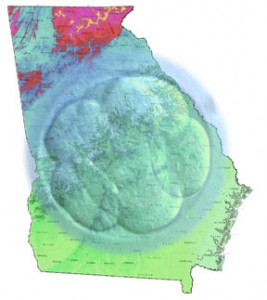 Georgia was the first state to pass an embryo adoption bill (2009) that provided an opportunity for intended parents to go through an adoption procedure to obtain the right to gestate a thawed frozen embryo. Other states, such as Florida, have embryo donation statutes on its books, which allow a couple to receive a donation from another (open or anonymous) of a frozen embryo. While the end results may appear to be the same, the road getting there and implications of using the different phrases are vastly different.
Georgia was the first state to pass an embryo adoption bill (2009) that provided an opportunity for intended parents to go through an adoption procedure to obtain the right to gestate a thawed frozen embryo. Other states, such as Florida, have embryo donation statutes on its books, which allow a couple to receive a donation from another (open or anonymous) of a frozen embryo. While the end results may appear to be the same, the road getting there and implications of using the different phrases are vastly different.
The Georgia law, which was championed by Right to Life groups, treated a frozen embryo in much the same way as it would a child already born. The new law and procedures mimic that of other adoption provisions and gives the frozen embryo many of the same rights and considerations of a born child, including using a “best interest of the child” standard in the adoption analysis. This philosophy is consistent with the concept that a child’s rights (as compared to the mother’s) begins at conception rather than birth and has implications in the abortion-right to choose/right to life arguments ongoing disagreements and potential laws expressing same.
Florida and many other states have historically treated frozen embryos as the property of the parents, who have the right to donate or dispose of the frozen embryos as they saw fit. The recipients received the frozen embryos as property under the respective laws of their state and could use or dispose of the frozen embryos as they saw fit. This process allowed for freer access to unused frozen embryos and discouraged the abandonment/discarding of them.
The agenda of the Georgia law was not necessarily meant to “protect” the frozen embryos but was designed to advance a political agenda of creating additional barriers to a women’s right to choose (i.e. restrict abortion) and to further control the reproductive rights of patients by discouraging the use of advanced reproductive techniques, such as in vitro fertilization as well as the cryopreservation and storage of excess embryos.
Up to now, there have been few attempts to export the Georgia concept in other states. This is perhaps due to the country’s economic challenges, but this possible trend needs to be closely monitored. The implications of providing “personhood” to embryos are far and wide and the Georgia statute is one of the first successful salvos to be launched with others most certainly to follow. Mississippi is currently targeted for a constitutional amendment to give embryos personhood and many other states are next in line for challenges that may significantly impair the health and reproductive care of women.
Harold Eskin, Esq.
www.LegalSurrogacy.com
HalEskin@LegalSurrogacy.com
1420 SW 47th Street
Cape Coral, FL 33904
239-549-5551
References:
Georgia Statute:
http://statutes.laws.com/georgia/title-19/chapter-8/article-2/19-8-41Florida Statute:
http://www.leg.state.fl.us/Statutes/index.cfm?App_mode=Display_Statute&Search_String=&URL=0700-0799/0742/Sections/0742.14.html
Hope & Will Have a Baby – Book review by Craig R. Sweet, M.D.
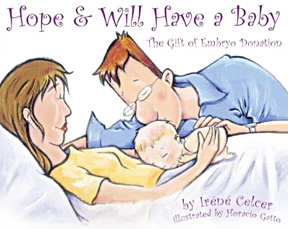 This book is one of a collection of third party conception children’s books written by the same author and illustrator and published by Graphite Press, copyright of 2006. It is one of the only books I have seen for children conceived though embryo donation.
This book is one of a collection of third party conception children’s books written by the same author and illustrator and published by Graphite Press, copyright of 2006. It is one of the only books I have seen for children conceived though embryo donation.
Ms. Celcer is a mental health professional that feels it is important to be up front in telling the children of embryo donation about their origin. In her forward, she cites the past secrets in adoption causing harm. She goes on suggesting that-
- • Children somehow sense the secrets
- • The failure to divulge may create shame in the parents of donated embryo offspring
- • Failure to tell a child results in a loss of pride of their beginnings
This book is to be used to tell the children about their loving conception while trying to manage the complex emotions of the parents.
Through the eyes of Hope and Will, a young married couple in love, the book explains what a “special place” the uterus is and how  embryos are created. Hope and Will experience infertility, depression and probably some grumpiness (can you imagine?). They seek help through Dr. Quest, who gives Hope tablets, pills and shots, but to no avail. Embryo donation is discussed, explaining anonymous and open options in simple and easy to understand terms.
embryos are created. Hope and Will experience infertility, depression and probably some grumpiness (can you imagine?). They seek help through Dr. Quest, who gives Hope tablets, pills and shots, but to no avail. Embryo donation is discussed, explaining anonymous and open options in simple and easy to understand terms.
Hope and Will conceive though embryo donation. The author emphasizes love, pride and excitement when the delivery finally takes place. Hope and Will are clearly grateful to their donor couple whom they have never met. Enough information is provided about the donors to help the child understand his origin.
While perhaps a little complex for a young child of four or five, the book might work quite well for a slightly older child. The pictures are wonderful and the emphasis on love and the desire to have a child by whatever means necessary is well done. I have always suggested that if parents tell the child, they should highlight their tremendous desire to have and love that child, as well as how hard they worked to bring such a wonderful child into their home.
Disclosure in embryo donation is a periodic theme of a number of my blogs. Adoption is clearly different than embryo donation. Adoption tends to be well accepted by most of the world’s religions. If embryo recipients tell friends, family and their donor-conceived offspring, there may be significant repercussions. Will the recipients and offspring be criticized, ostracized or, even, excommunicated by these same people or by their own religion?
Unfortunately at this time, I simply don’t believe we have enough data to make a clear recommendation to embryo recipients although there is wonderful ongoing research that will hopefully help to answer this question. For now, extrapolating what we have learned from adoption may simply not be appropriate for embryo donation, although passions on both sides of this issue 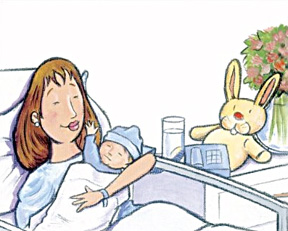 abound. The long-term consequences of secrecy vs. total openness to friends, family and the child of embryo donation are essentially unknown and I feel this decision needs to be made carefully with consultation with skilled mental health professionals (and Ms. Celcer is one of them), reproductive endocrinologists and perhaps, most importantly, recipients that have already traveled this journey.
abound. The long-term consequences of secrecy vs. total openness to friends, family and the child of embryo donation are essentially unknown and I feel this decision needs to be made carefully with consultation with skilled mental health professionals (and Ms. Celcer is one of them), reproductive endocrinologists and perhaps, most importantly, recipients that have already traveled this journey.
Selling for about $20 at Barnes & Noble, the purchaser should know this is a paperback and only 28 pages. The reader is clearly paying for the content and not story length or volume.
I highly recommend this book for those parents who decide to tell their child they were conceived through embryo donation, although the story line may need to be changed for single women and gay and lesbian couples. For the lucky parent(s) of embryo donation, this is a fairly good place to start if disclosure is the path they choose to follow.
Craig R. Sweet, M.D.
Founder, Medical & Practice Director
Embryo Donation International
Disclosure Issues in Embryo Donation: Summary Comments
Brief Introduction
Embryo donors and recipients are faced with a number of life-changing decisions as they contemplate disclosure. This is the final segment of a five-part series summarizing the complex decisions surrounding the disclosure of the genetic origins of embryo donor-conceived individuals to family, friends and the offspring themselves.
What are some of the questions that embryo donors and recipients must explore before deciding to disclose or not?
Embryo donors must decide if they want a relationship with the donor-conceived individual being raised by another family. Are the donors willing to disclose their donation of embryos, which may have taken place years ago, to friends and family, including their existing children? At what age would they want the donor-conceived individual to contact them?
Recipients need to ask related questions about whether they should tell their embryo donor-conceived children about their origins. If they want to do so, when should they tell and what information should they share? Are the recipients comfortable letting their family members and friends know of their infertility history? Will the recipients and offspring be criticized, ostracized or, even, excommunicated by these same people or by their religion? Are they comfortable with their child contacting and potentially having a relationship with the embryo donors and their blood siblings?
Can an understanding of adoption disclosure be used in the world of embryo donation?
It is understandable, but potentially misguided, that some professionals believe embryo donation is identical to the adoption of a live child. I have written about this topic before. While the American Society for Reproductive Medicine (ASRM) states that the term “embryo adoption” should not be used, some facilities do so openly.
However, regardless of the legal differences, there also are a number of very practical differences:
- Because the embryo recipient carries and delivers the child, her pregnancy may look natural, making disclosure by the recipients optional. Adoption is much more difficult to hide.
- Disclosure of the embryo donation process may not be well accepted by friends, family and some religions. While not universally accepted, adoption may be better tolerated.
- As with sperm donation, single women and lesbian couples who conceive with donated embryos are more likely to disclose because the fatherhood issue inevitably arises. Heterosexual couples, however, are the least likely to disclose.
How often is disclosure currently revealed?
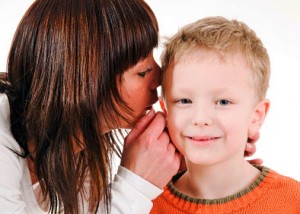 There is a growing body of data that suggests only a minority of the embryo donor-conceived children are told of their origins. In an English study of 17 embryo donation families with donor offspring between five and nine years old, only 18% of the recipient parents had told their children (MacCallum F. et al. 2008). An additional 24% planned on telling, 12% were undecided and 47% stated they would not tell. The reality is that many of those who planned on telling or were undecided may eventually decide against disclosure as the child ages and enters the more difficult years of adolescence. This seemed to be different than other donor procedures where 46% of donor sperm insemination parents and 56% of egg donation parents planned to disclose (Golombok S, et al. 2004).
There is a growing body of data that suggests only a minority of the embryo donor-conceived children are told of their origins. In an English study of 17 embryo donation families with donor offspring between five and nine years old, only 18% of the recipient parents had told their children (MacCallum F. et al. 2008). An additional 24% planned on telling, 12% were undecided and 47% stated they would not tell. The reality is that many of those who planned on telling or were undecided may eventually decide against disclosure as the child ages and enters the more difficult years of adolescence. This seemed to be different than other donor procedures where 46% of donor sperm insemination parents and 56% of egg donation parents planned to disclose (Golombok S, et al. 2004).
Why has anonymity been the norm in embryo donation?
The concept of anonymity in egg/sperm/embryo donation has its roots in the physician/patient relationship to meet a series of needs (Daniels K. 1997). To assume that it should be discontinued for everyone doesn’t take into account the ethical, social and religious circumstances of different patients.
Since the medical profession assumes parents are able to make, without question, thousands of different choices for their children, assuming they are incapable of making a decision, such as disclosure which affects both the child and parents, is simplistic and rather paternalistic.
Why not disclose?
Let’s face it; there might indeed be a lack of societal approval of offspring who originated from donor material. Many people are judgmental regarding embryo donation, especially in cultures and religions that emphasize genetic inheritance. Recipients have legitimate reasons to fear the potential damage to themselves and their children from other people’s negative reactions, social stigma and resulting isolation (Shehab D, et al. 2008).
Some of the reasons recipients do not want to disclose include protecting their children  and family relationships from rejection, not feeling a need to disclose or uncertainty about how to approach the matter (MacCallum F, et al. 2007, Jadva V, et al. 2009 & Mahlstedt PP, et al. 2010). Disclosing also will broadcast their infertility issues, which they may have kept quite private in the past (Klock SC. 1997). Another common reason given for not disclosing is fear that they as non-genetic parents will be rejected. Actually, there is no data to support or deny this last very human concern.
and family relationships from rejection, not feeling a need to disclose or uncertainty about how to approach the matter (MacCallum F, et al. 2007, Jadva V, et al. 2009 & Mahlstedt PP, et al. 2010). Disclosing also will broadcast their infertility issues, which they may have kept quite private in the past (Klock SC. 1997). Another common reason given for not disclosing is fear that they as non-genetic parents will be rejected. Actually, there is no data to support or deny this last very human concern.
Unlike adoption, it is doubtful that the offspring of embryo donation will have to resolve the “history of rejection” unlike adopted children who were separated from their birth parents (Widdows H, et al. 2002). Families created through embryo donation are a product of a loving gift and not formed from perceived rejection. Therefore, some of the motivation to disclose in adoption simply does not exist in embryo donation.
Why should parents disclose?
The most common reason for embryo recipients to disclose is a fear that the child will accidently discover the facts at a later date (MacCallum F, et al. 2007). One study of adult offspring of sperm donation found that about 1/3rd of the individuals learned of their donor origins after an argument, from another person or they just figured it out themselves (Mahlstedt PP, et al. 2010). In a recent study, about 10% (47/458) of the sperm donor offspring who were searching for their donors and half-siblings found out by accident (Beeson DR, et al. 2011). They were apparently told by siblings, family or friends; discovered paperwork or inheritable medical issues that their recipient parents did not have; inadvertently overheard their parents talk about it; or it was revealed as a consequence of divorce. Recipients who tell family and friends but not the child are asking for future problems. When examining these two studies, it is clear there is a reasonable risk that the offspring will discover their origins, even under the best of circumstances. It also is important to realize that sperm, egg and embryo donation procedures are different when analyzing the study results.
There are some embryo donation recipients who feel it is simply best to not have secrets in the home. Others believe the embryo donor-conceived children have a moral right to know their origins. Some feel it is important that the children understand and connect to their genetic inheritance beyond the family who raised them.
What should be disclosed?
There are three decision levels in disclosure: 1) To decide to disclose, 2) To decide what age to disclose, and 3) To decide what information is to be provided. One can simply tell the child he or she was embryo donor-conceived but the child is certain to have more questions. At the very least, I believe providing the donors’ photographs (when they are available) as well as their medical, surgical, psychiatric, family and social histories are needed. However, providing actual identifying information needs to be handled carefully and thoughtfully.
When should disclosure take place?
Disclosure early in the child’s development, certainly before age ten, would seem to be ideal. Some mental health professionals (MHP’s) feel it should be discussed as early as possible. If disclosure occurs in adolescence or later, young adults may feel mistrust, alienation, identity confusion, frustration and even hostility towards their family (Ethics Committee, 2004 & Mahlstedt PP, et al. 2010). About 46% of donor sperm offspring who were told at the age of 18 or older stated they were confused. It is probably best to tell the child before the age of 10 than wait until later where there is a doubling of the number of children who were unsettled with the information.
Why do embryo donor-conceived individuals want to know their genetic origins?
Many embryo donor-conceived individuals may be curious about their donors’ physical characteristics and original motivation to donate, as well as possess a desire to know their genetic identity and, perhaps, provide an ancestral history for their own children. (Ravitsky V, et al. 2010 & Mahlstedt PP, et. al. 2010).
For many, the search for their donors may go well beyond just seeking simple information. In two recent studies of offspring searching for their donor sperm fathers, 80-88% were intensely curious about their donor and wanted to contact him. Up to one-third desired an actual relationship with the sperm donor (Beeson DR. 2011 & Mahlstedt PP, et al. 2010). It should be understood, however, that studies such as these might not represent a balanced patient sample. Only offspring searching for information contributed to those studies. There wasn’t a practical way to capture the opinions of those offspring who were not part of the Internet support groups, who may indeed represent a very silent majority.
Do embryo donor-conceived offspring have the right to know their origins?
Many donor-conceived individuals feel they have a right to know their genetic origins (Shehab D, et al. 2008). Embryo donors and recipients, who may prefer an anonymous process, have rights that compete with those of the donor-conceived individuals. Embryo donors and recipients have legal rights that are in direct contrast to the offspring’s moral view that family secrets shouldn’t be kept. There is no easy way to reconcile these contrasting legal rights and moral perspectives. Most agree, at the risk of offending those who feel differently, that in a society ruled by law, a legal right ultimately trumps a perceived moral right. Thus, the legal rights of donors and recipients continue to prevail in this country.
Should disclosure be mandated?
There is a stronger preference to discard or abandon the embryos than there is to donate them. Placing any impediments on embryo donation, such as mandating disclosure, may not only reduce the number of embryos donated but will almost certainly result in a greater number of embryos discarded or abandoned. I cannot imagine the well-meaning individuals who are asking for mandated disclosure would want the loss of embryos and potential families to be an almost certain unintended consequence.
Parents who used donor material feel the decision to disclose is private, highly personal and should be left to the discretion of the individual families and not regulated in any way (Shehab D, et al. 2008). A dual-track of disclosure/nondisclosure system will most meet the needs of everyone (De Jonge C, et al. 2006). We need to educate, guide and support, but not force these processes.
What happens to children who learn or don’t learn about their origins?
Interestingly, children do not seem to be harmed if disclosure does not take place.
Warm parent-child relationships and positive child development have been documented, although few of these donor embryo-conceived children have yet entered adolescence (Golombok S, et al. 2006). While more data and follow up studies are certainly needed, embryo donation children do not seem to be at increased risk for developing psychological problems during early and middle childhood, regardless of disclosure decisions. Supporting these findings about early disclosure, neither the children nor the family seem to be harmed (MacCallum F, et al. 2007 & 2008). While not definitive, the research we have so far suggests that disclosure decisions, either for or against, will not cause irreparable harm to the embryo donor-conceived individuals or the parents who raised them.
Interestingly, research shows that embryo donation families are more child-centered than adoptive and, even, other IVF families, regardless of their disclosure status (MacCallum F, et al. 2007 & 2008). This may be due in part to the recipients’ older age and maturity compared to younger IVF and adoptive parents. Embryo donation-conceived children are tremendously appreciated, greatly desired and hard fought for by their parents. This should give embryo donors confidence that donor-conceived offspring will be well cared for by wonderful recipient families.
What should be considered if embryo donor-conceived individuals meet the donors?
If donor-conceived individuals connect their donors and/or blood siblings, it is important that everyone’s expectations be reasonable. Members of donor-linked families may have a significant mismatch regarding their levels of hope and expectation about contact (Scheib JE, et al. 2008). Some of the participants may have a tendency to romanticize the first meeting and future relationship. The participants should move slowly and carefully, without inappropriate expectations.
It is exceedingly important that the relationship between the parents who raised the child and the embryo donor-conceived offspring not be harmed, as this is the basis for the child’s stability and home life. The fear that this relationship will be damaged is one of the main reasons recipients prefer to not disclose, so it must be protected.
Long-term data regarding the relationships between embryo donors and embryo donor-conceived individuals is not yet available, so we simply are unable to tell any of the participants what the outcome may be (Grotevant HD, et al, 2008). The parents who raised the donor-conceived child may feel threatened by the relationship between the donors and offspring. It would be irresponsible for us as clinicians to assume that all will go well. We must remain cautious and counsel our patients carefully and individually until we have more information to guide them.
Can recipients get help in deciding if disclosure should take place?
Consultation with a mental health professional (MHP) regarding disclosure is strongly encouraged but the counselor must understand the subtle differences between embryo donation and adoption, where disclosure is the norm. Neutrality is required and finding a skilled and experienced MHP is important. Many patients resent direct suggestions about disclosing and far prefer a discussion that examines their own needs and perspectives (Klock SC, 1997). In reality, it is really not appropriate to give a uniform recommendation that does not take into account the personal, ethical and religious views of the embryo recipients.
Even more important, embryo recipients may want to hear from other recipients, people who have worked through the issues or are struggling with making the decision (Klock SC, 1997).
In our three recent surveys examining the perspectives of potential embryo donors, recipients and offspring, there were a few consistent findings:
- From the embryo donor perspective, the majority polled desired an open process.
- From the embryo recipient perspective, the majority polled desired anonymity.
- The majority of potential embryo donors and embryo recipients would disclose to their friends and family.
- If open-identity was available, the majority felt information should be shared and potential contact be made before the age of 18, which may differ in adoption proceedings.
Are reproductive facilities prepared for disclosure?
A medical providers’ first reaction will be to protect their patients: the embryo donors and recipients. State and federal statutes protect confidentiality and clear consent must always be provided before medical/identifying information is released to a third party. The reproductive facilities also will want to be insulated from any legal consequences should disclosure occur.
Some medical practices will be operationally challenged to have records available years after procedures are performed. Many states require that medical records be retained for seven years. The Federal Drug Administration (FDA) requires practices to retain for ten years the medical records of patients involved in third party conception, while the ASRM suggests the records be stored indefinitely. Being able to identify those particular charts from others that would otherwise routinely be discarded is a logistical challenge. In my practice, we color-code the charts involving any type of donor material, making them easy to pull and save.
I also feel embryo recipients have a responsibility to keep the information they were originally provided about their embryo donors protected and safe in case the practice’s medical records are ever lost or deleted.
Regardless, the facilities have a responsibility to assure charts are available and that systems are in place to make disclosure possible. Policies and procedures will need to be created so that they are ready when the requests come. Mirroring the adoption world in this instance may be of use.
How do recipients disclose?
Experienced MHP’s can provide invaluable assistance in helping embryo recipients present this  sensitive information. Reproductive endocrinologists, well versed in this topic, may also be very useful in deciding how and when to tell the children. Forums where parents can discuss these issues with other parents who have lived them also may be indispensible. While few books exist on the topic, I will be reviewing one quite soon that does. Please stay tuned.
sensitive information. Reproductive endocrinologists, well versed in this topic, may also be very useful in deciding how and when to tell the children. Forums where parents can discuss these issues with other parents who have lived them also may be indispensible. While few books exist on the topic, I will be reviewing one quite soon that does. Please stay tuned.
Using the following phrases and ideas in the discussion may be useful:
- We wanted you to be in our lives so much, we had to travel far and wide to find you.
- The people who gave us their embryos, which included you, gave us the most wonderful gift in the world. They loved you so much that they wanted you to enjoy life with us.
- I got to carry and protect you, giving you all the love I could.
- Remember that eggs, sperm and embryos don’t make a family any more than bricks make a happy home. What makes a family is how we support and love each other.
A good way to start this conversation is by emphasizing love, your commitment to find them, the amount of time, effort and emotion you invested in bringing them into the world, and the fact that genetics doesn’t necessarily make a family. I’m sure MHP’s will offer recipients some great phrases and ideas, which I will encourage that they share with us on this blog.
What are the long-term consequences of disclosure?
Research is needed to find out more about long-term disclosure outcomes. It is difficult to ascertain how children are fairing who are not told about their origins fare because these individuals are not readily accessible to research. Also, what happens over time with open donation is largely unknown. I feel it is unrealistic to assume that everyone will live together as one big happy family. I suspect, however, that the donor-conceived children will benefit in establishing connections with blood siblings.
If disclosure occurs and the offspring are destined to contact their genetic parents, their reunion should not be romanticized. They will not necessarily be welcomed with open arms up to two decades later by the donors. In fact, we don’t have any idea how well or how disruptive these reunions will be. Once again, research is desperately needed.
Is there a disclosure compromise available?
The idea of open-identity is a fascinating concept for embryo donation. This would allow donors to be contacted if the recipients eventually disclose the genetic origins to their donor-conceived offspring. According to our recent surveys, most respondents wanted disclosure with open-identity to occur before the children turn 18 and have the ability to contact the donors. But what harm will come to the child if disclosure and contact are done earlier in the formative years? Would there be some advantages to knowing earlier rather than later in adulthood?
It would seem that if recipients are disclosing for the sake of the child, it may truly be best to allow disclosure and open-identity earlier rather than later. I hope to pose this question to MHPs in the months to come.
In summary
I feel it is far better that we design programs with open-identity options but not legislate them. Legislation, especially if it is retroactive, will inject uncertainty about every current rule governing the practice of egg/sperm/embryo donation (Guido P, 2001). Legislation will do more to shut donation processes down than any other development. I understand there are some donor-conceived individuals who feel that all information should be open to review, but past contracts were doubtfully formulated that way. Although unpopular with some, the perceived rights of the donor offspring should not be allowed to circumvent the true legal rights of the donors and recipients.
At a recent ASRM meeting, some MHPs and reproductive attorneys lamented that anonymous embryo donations are allowed to continue. I explained that if they want to change physicians’ and patients’ perspectives on anonymity, they would only succeed with data showing the long-term benefits of disclosure. Until that time, clinicians and patients alike will be hesitant to adopt a stance that is not yet supported by unbiased research. We should tread lightly and make very few assumptions when it comes to issues so important as disclosure or we risk doing harm to our patients. We all need a bit more information in caring for our embryo donors and recipients. We must never forget, however, that embryo donation-conceived individuals, who were never our actual patients, and are still owed thoughtful care and tremendous compassion. We must keep an open mind and learn from their perspective.
There will always be a group of patients who will want anonymity and we all need to respect their wishes. Everyone involved in this debate needs to take a breath and step back. I grow weary of a very vocal group of patients who believe their way is the single right way. This is not a black and white issue. We should instead see the disclosure controversy in shades of grey. Compromise these days seems to be viewed as form of weakness in our country’s politics. This country was founded on the basis of choice and I feel strongly that we should design systems that will allow for choice while educating the participants of embryo donation about their options and the potential results of both disclosure and non-disclosure to embryo donor-conceived individuals. It is our responsibility.
As always I welcome a respectful dialogue, especially from those who disagree. I look forward to reviewing research studies that will guide all of us so we may better counsel embryo donors, embryo donor recipients and especially the embryo donor-conceived individuals, who remain the final focus of this entire discussion.
Craig R. Sweet, M.D.
Reproductive Endocrinologist
Founder, Medical & Practice Director
Embryo Donation International
Info@EmbryoDonation.com
www.EmbryoDonation.com
Associated Blog Segments:
- Introduction: Disclosure Issues in Embryo Donation
- Embryo Donor Perspective
- Survey Results: Imagine you are an Embryo Donor
- Blog: Disclosure Issues From the Perspective of the Embryo Donor (Part 1 & Part 2)
- Embryo Recipient Perspective
- Survey Results: Imagine you are an Embryo Recipient
- Blog: Disclosure Issues From the Perspective of the Embryo Recipient (Part 1 & Part 2)
- Embryo Donor Offspring Perspective
- Survey Results: Imagine you are an Embryo Donor Offspring
- Blog: Disclosure Issues From the Perspective of the Embryo Donor Offspring (Part 1 & Part 2)
Registry Links:
- The Donor Sibling Registry: https://www.donorsiblingregistry.com/
- UK Donor Link: http://ukdonorlink.org.uk/ (funding uncertain)
- Western Australia’s Voluntary Register for Donors, Offspring and their Families: http://www.voluntaryregister.health.wa.gov.au/home/
- BCdonorconception, British Columbia donor offspring: http://groups.yahoo.com/group/BCdonorconception/
Donor Sperm Facility Registries:
- California Cryobank’s Sibling Registry: http://www.sibling-registry.com/
- Fairfax Cryobank: Donor Sibling Groups: http://www.donorsiblinggroups.com/Home_Page.html
General Third Party Conception Support:
- Donor Conception Support Group: http://www.dcsg.org.au/
- PCVAI, People Conceived via Donor Insemination: http://groups.yahoo.com/group/PCVAI/
- International Donor Offspring Alliance: http://www.idoalliance.org/
- The Donor Conception Support Group of Australia Inc: http://www.clan.org.au/dcsg/index.html
- Canadian Donor Offspring: http://www.canadiandonoroffspring.ca/
- Germany: http://www.spenderkinder.de/
References:
Beeson DR, Jennings PK, Kramer W. Offspring searching for their sperm donors: how family type shapes the process. Hum Reprod. 2011 Sep;26(9):2415-24.
Daniels K. The controversy regarding privacy versus disclosure among patients using donor gametes in assisted reproductive technology. J Assist Reprod Genet. 1997 Aug;14(7)-373-5.
De Jonge C, Barratt CL. Gamete donation- a question of anonymity. Fertil Steril. 2006 Feb;85(2)-500-1.
Klock SC. The controversy surrounding privacy or disclosure among donor gamete recipients. J Assist Reprod Genet. 1997 Aug;14(7)-378-80.
Ethics Committee of the American Society for Reproductive Medicine. Informing offspring of their conception by gamete donation. Fertil Steril. 2004 Sep;82 Suppl 1-S212-6.
Ethics Committee of the ASRM. Informing Offspring of their conception by gamete donation. Fertil Steril 2004;81(3):527-31.
Golombok S, Lycett E, MacCallum F, Jadva V, Murray C, Rust J, Abdalla H, Jenkins J, Margara R. Parenting infants conceived by gamete donation. J Fam Psychol. 2004 Sep;18(3):443-52
Golombok S, Murray C, Jadva V, Lycett E, MacCallum F, Rust J. Non-genetic and non-gestational parenthood: consequences for parent-child relationships and the psychological well-being of mothers, fathers and children at age 3. Hum Reprod. 2006 Jul;21(7):1918-24.
Grotevant HD, Wrobel GM, Von Korff L, Skinner B, Newell J, Friese S, McRoy RG. Many Faces of Openness in Adoption: Perspectives of Adopted Adolescents and Their Parents. Adopt Q. 2008 Jul 1;10(3 & 4):79-101.
Guido P. The reduction of sperm donor candidates due to the abolition of the anonymity rule: Analysis of an argument. J Assist Reprod Genet. 2001 Nov;18(11)-617-22.
Jadva V, Freeman T, Kramer W, Golombok S. The experiences of adolescents and adults conceived by sperm donation: comparisons by age of disclosure and family type. Hum Reprod. 2009 Aug;24(8):1909-19.
Klock SC. The controversy surrounding privacy or disclosure among donor gamete recipients. J Assist Reprod Genet. 1997 Aug;14(7)-378-80.pdf
MacCallum F, Golombok S, Brinsden P. Parenting and child development in families with a child conceived through embryo donation. J Fam Psychol. 2007 Jun;21(2):278-87.
MacCallum F, Keeley S. Embryo donation families: a follow-up in middle childhood. J Fam Psychol. 2008 Dec;22(6):799-808.
Mahlstedt PP, LaBounty K, Kennedy WT. The views of adult offspring of sperm donation: essential feedback for the development of ethical guidelines within the practice of assisted reproductive technology in the United States. Fertil Steril. 2010 May 1;93(7):2236-46.
Ravitsky, V. & Scheib, J.E. (2010). Donor-conceived individuals’ right to know. Hastings Center Bioethics Forum 2010;40:(4).
Scheib JE, Ruby A. Contact among families who share the same sperm donor. Fertil Steril. 2008 Jul;90(1):33-43.
Shehab D, Duff J, Pasch LA, Mac Dougall K, Scheib JE, Nachtigall RD. How parents whose children have been conceived with donor gametes make their disclosure decision: contexts, influences, and couple dynamics. Fertil Steril. 2008 Jan;89(1):179-87.
Widdows H, MacCallum F. Disparities in parenting criteria: an exploration of the issues, focusing on adoption and embryo donation. J Med Ethics 2002;28:139-42.
Part 2: Disclosure from the Perspective of the Embryo Donor Offspring
This is Part 2 of the Disclosure From the Perspective of the Embryo Donor Offspring series. If you missed Part 1 and want to catch up, please scroll below or click here.
How Should Embryo Donor Offspring be Told About Their Origins?
 I wrote in the third segment of this blog series about the best time to disclose genetic identity to embryo donor offspring. I believe that disclosing this information before children are ten years of age may be far better than waiting until they are older, which significantly increases the probability they might be unsettled with the information (Mahlstedt PP, et al. 2010). One of the interesting themes in our surveys has been the consistent finding that the vast majority of respondents would want to know about their origins before age 12 with 91% (10/11) certainly before the age of 18. If Open-Identity were to be practiced in embryo donation, connections between the offspring and the donors may best occur far earlier than what is currently seen with adoption.
I wrote in the third segment of this blog series about the best time to disclose genetic identity to embryo donor offspring. I believe that disclosing this information before children are ten years of age may be far better than waiting until they are older, which significantly increases the probability they might be unsettled with the information (Mahlstedt PP, et al. 2010). One of the interesting themes in our surveys has been the consistent finding that the vast majority of respondents would want to know about their origins before age 12 with 91% (10/11) certainly before the age of 18. If Open-Identity were to be practiced in embryo donation, connections between the offspring and the donors may best occur far earlier than what is currently seen with adoption.
Experienced mental health professionals may prove invaluable in helping parents present this sensitive information. Reproductive endocrinologists well versed in this topic may also be very useful in deciding how and when to tell children. Forums where parents can discuss these issues with other parents who have experienced them may also be indispensible.
I soon will be reviewing a children’s book on this very topic, sharing my thoughts about it with my readers. So stay tuned.
What are the Long-Term Consequences of Disclosure?
Members of donor-linked families may have a significant mismatch regarding their levels of hope and expectation about contact (Scheib E, et al. 2008). Some of the participants may have a tendency to romanticize the first meeting and subsequent relationship. My simple recommendation at this time is to move slowly and carefully, without inappropriate expectations.
It is exceedingly important that the relationship between the parents who raised the child and the embryo donor offspring not be harmed, as this is the basis for the child’s stability and home life. The fear that this relationship will be damaged is one of the main reasons recipients prefer to not disclose.
Remember that little is known about long-term consequences following disclosure and the subsequent contact between embryo donor offspring and their genetic parents and siblings. The complex emotional interplay between embryo donor offspring and the parents who raised them, the embryo donors and the offspring’s genetic is completely unknown. This area of research is sorely needed.
In our most recent survey, 68% of the respondents would tell immediate family, their own children and their significant partners about their embryo donation origins. The only hesitancy involved friends with 40% (4/10) stating that they would not disclose. Once again, the long-term consequences of disclosure remain uncertain with some societies and religions perhaps being less than welcoming to an embryo donation-conceived individual. It would be irresponsible for us as clinicians to assume that all will go well. We must remain cautious and counsel our patients carefully and individually until we have more information to help guide them.
Will the Embryo Donor Offspring Be Hurt by Not Being Told?
Studies that have specifically examined the psychological well being of embryo donation offspring indicate that embryo donation families, independent of disclosure decisions, are faring well (MacCallum F, et al. 2007 & 2008). Warm parent-child relationships and positive child development have been documented although few of these donor embryo-conceived children have yet entered adolescence (Golombok S, et al. 2006). While more data and follow up studies are certainly needed, embryo donation children do not seem to be at increased risk for developing psychological problems during early and middle childhood, regardless of disclosure decisions. The children that were not told of their origin were do as well as those who were told.
Children whose parents do not tell them about their embryo donor origin cannot suffer from lack of disclosure. Whether the parents tell or not, there is research to show that embryo recipient parents may be more attentive and warm to their offspring than natural conception parents.
While not definitive, the research we have so far suggests that disclosure decisions, either for or against, will not cause irreparable harm to the embryo donor-conceived individuals or the parents who raise them.
Summary Comments
Currently, the legal rights of embryo donors and recipients override the strong desire of embryo donor offspring to learn more about or even meet their donors. There is a push to mandate disclosure, but the consequences in the world of embryo donation may be dire. It is quite likely that more embryos will be discarded or abandoned before donors will be forced into an open-identity process.
Using terms such as “mother” and “father” for those who raised the embryo donor offspring should be maintained. The terminology that is used to describe the embryo donors can get confusing. It is my personal choice, but “donor mom ” and “donor dad” seem the simplest and kindest to all.
Reproductive facilities need to prepare for disclosure requests and adhere to record retention guidelines, whenever possible, to avoid unfortunate lapses in information and potential legal consequences.
I understand a donor-conceived individual’s strong desire to know more about their donors. I believe that providing the donor’s medical, surgical, psychiatric, family and social histories is quite reasonable when disclosure occurs. However, providing actual identifying information needs to be handled carefully and thoughtfully. Impartial research to examine the long-term consequences of open-identity issues in embryo donation is sorely needed.
Since physicians take an oath to cause no harm, we all need a bit more information and guidance in caring for our patients, embryo donors and recipients. We must never forget, however, the embryo donation-conceived individuals, who were never our patients, are still owed thoughtful care and tremendous compassion. We have much to learn from them.
References:
Beeson DR, Jennings PK, Kramer W. Offspring searching for their sperm donors: how family type shapes the process. Hum Reprod. 2011 Sep;26(9):2415-24.
Daniels K. The controversy regarding privacy versus disclosure among patients using donor gametes in assisted reproductive technology. J Assist Reprod Genet. 1997 Aug;14(7)-373-5.
De Jonge C, Barratt CL. Gamete donation- a question of anonymity. Fertil Steril. 2006 Feb;85(2)-500-1.
Klock SC. The controversy surrounding privacy or disclosure among donor gamete recipients. J Assist Reprod Genet. 1997 Aug;14(7)-378-80.
Golombok S, Murray C, Jadva V, Lycett E, MacCallum F, Rust J. Non-genetic and non-gestational parenthood: consequences for parent-child relationships and the psychological well-being of mothers, fathers and children at age 3. Hum Reprod. 2006 Jul;21(7):1918-24.
Guido P. The reduction of sperm donor candidates due to the abolition of the anonymity rule: Analysis of an argument. J Assist Reprod Genet. 2001 Nov;18(11)-617-22.
MacCallum F, Golombok S, Brinsden P. Parenting and child development in families with a child conceived through embryo donation. J Fam Psychol. 2007 Jun;21(2):278-87.
MacCallum F, Keeley S. Embryo donation families: a follow-up in middle childhood. J Fam Psychol. 2008 Dec;22(6):799-808.pdf
Mahlstedt PP, LaBounty K, Kennedy WT. The views of adult offspring of sperm donation: essential feedback for the development of ethical guidelines within the practice of assisted reproductive technology in the United States. Fertil Steril. 2010 May 1;93(7):2236-46.
Ravitsky, V. & Scheib, J.E. (2010). Donor-conceived individuals’ right to know. Hastings Center Bioethics Forum 2010;40:(4).
Scheib JE, Ruby A. Contact among families who share the same sperm donor. Fertil Steril. 2008 Jul;90(1):33-43.
Shehab D, Duff J, Pasch LA, Mac Dougall K, Scheib JE, Nachtigall RD. How parents whose children have been conceived with donor gametes make their disclosure decision: contexts, influences, and couple dynamics. Fertil Steril. 2008 Jan;89(1):179-87.
Disclosure Issues in Embryo Donation: Part 4 of 5
Brief Introduction
This is the fourth of a five-part series examining the complex decision-making surrounding the disclosure of the genetic origins of embryo donor offspring to family, friends and the offspring themselves. There were 11 respondents with the results examined below.
Associated Blog Segments
The first segment of this series introduced the disclosure topic and our first survey. The second segment (Part 1 and Part 2) examined disclosure issues from the perspective of the embryo donor, incorporating a survey that asked opinions from our readers. The third segment (Part 1 and Part 2) examined disclosure from the perspective of the embryo recipient, including our final survey. The results are discussed below.
Survey Results: “Imagine You Were an Embryo Donor Offspring”
1. Regarding the topic of disclosure of my genetic origins:
| I would not desire to know that I was created through donated embryos. The parents who raised me are simply my parents and it doesn’t really matter if I came from donated embryos. | 18% (2/11) |
| I would like to know all the available medical information about the embryo donors. I would not, however, want identifying information. | 46% (5/11) |
| I would like to know all the available medical information about the embryo donors. In addition, I would like to be provided identifying information. | 36% (4/11) |
Comments:
In this small study sample, the majority [82% (9/11)] wanted to know medical information about their embryo donors, with about half wanting identifying information. These numbers are similar to published data on the desires of egg and sperm donation-conceived individuals.
2. If I were to be told about being an embryo donor offspring, I would want to be told (choose only one):
- Sometime during ages 1-6 years old 55% (6/11)
- Sometime during ages 7-12 years old 18% (2/11)
- Sometime during ages 13-18 years old 18% (2/11)
- After age 18 9% (1/11)
Comments:
The majority [91% (10/11)] would prefer to be told of their embryo donor origins before the age of 18, with most wanting to know at 12 years of age or younger. As I wrote in the previous blog, disclosure to the embryo donor-conceived individual after age 10 tends to result in feelings of mistrust, alienation, identity confusion, frustration and even hostility towards their family (Ethics Committee, 2004 & Mahlstedt PP, et al. 2010).
3. If I were provided medical and identifying information about the embryo donors, I would do the following (choose only one):
| I would not try to contact the embryo donors. | 55% (6/11) |
| I would try to contact the embryo donors but am most interested in learning about and potentially contacting my blood brothers and sisters. | 45% (5/11) |
| I would try to contact the embryo donors to establish a relationship with the genetic parents and my blood brothers and sisters. | 0% (0/11) |
Comments:
About half of those polled would not try to contact the embryo donors while the other half would be interested in contacting their genetic siblings. Published articles on the topic suggest that most donor-conceived individuals are more curious, with many wanting to meet their donors. I believe that if given the contact information, most embryo donor-conceived individuals will become quite curious over time and will eventually want to interact with their genetic siblings and/or the embryo donors themselves.
4. If I found out that I was the product of embryo donation, I would tell the following people:
| Relationship | Yes | No | N/A (not alive or no current relationship) |
| My “significant other” | 91% (10/11) | 0% (0/11) | 9% (1/11) |
| My in-laws | 60% (6/10) | 10% (1/10) | 30% (3/10) |
| My children | 60% (6/10) | 10% (1/10) | 30% (3/10) |
| My friends | 60% (6/10) | 40% (4/10) | 0% (0/10) |
| Average: | 68% (28/41) | 15% (6/41) | 17% (7/41) |
Comments:
If one removes the “N/A” category, which didn’t pertain to some of the poll respondents, the majority of embryo donor-conceived individuals would tell their immediate family about their genetic origin, especially to their “significant other.” It would appear, however, that there was some hesitation to tell their friends the same information.
Tomorrow we will release the next installment of this series – Disclosure Issues From the Perspective of the Embryo Donation Offspring. This will be released in two separate sections with the second half released the day after the first.
Next week, we will release our final summary of this series, combining the perspectives of the embryo donors, embryo recipients and embryo donation-conceived offspring.
Part 2: Disclosure from the Perspective of the Embryo Recipient
This is Part 2 of the Disclosure From the Perspective of the Embryo Recipient series. If you missed Part 1 and want to catch up, please scroll below or click here. In the week prior, we also covered the same disclosure issue but from the perspective of the embryo donor, scroll further down or click Part 1 and Part 2. More is yet to come in the two weeks ahead as we continue to evaluate this topic that is important to so many.
 When is the Best Time to Disclose Embryo Donation to the Child?
When is the Best Time to Disclose Embryo Donation to the Child?
If parents decide to disclose, it is seemingly better to do so earlier rather than later. Disclosing to a young child allows the child time to absorb the information. If disclosure occurs in adolescence or later, the young adult may feel mistrust, alienation, identity confusion, frustration and even hostility towards his or her family (Ethics Committee, 2004 & Mahlstedt PP, et al. 2010). About 46% of the donor sperm offspring who were told at the age of 18 or older stated they were confused about the disclosure. According to the research published, it seemed as though it was best to tell the child before the age of 10 because waiting doubled the number of children who were unsettled with the information.
How Often Do Offspring Inadvertently Discover Their Origins?
The most common reason for embryo recipients to disclose was a fear that the child would accidently discover the facts at a later date (MacCallum F, et al. 2007). When recipients are considering embryo donation, they commonly toss the idea around with friends and family. I urge caution here. The more people who know of their decision to be embryo recipients the greater the likelihood that offspring may discover their origins.
Even if the recipient parents keep the information to themselves, the children may still find out. One study of adult offspring of sperm donation found that about one-third of the individuals learned of their donor origins after an argument, from another person or they figured it out themselves (Mahlstedt PP, et al. 2010). In a recent study, about 10% (47/458) of the sperm donor offspring who were searching for their donors and half-siblings found out by accident (Beeson DR, et al. 2011). They either were apparently told by siblings, family or friends; discovered paperwork or unusual medical issues, overheard parents talking or learned as a consequence of divorce. Though sperm, egg and embryo donation procedures differ in many respects, when examining these two studies it is clear that there is a reasonable risk that the offspring will discover their origins even in the best of circumstances.
Are Embryo Donor Offspring Harmed by Non-Disclosure?
Interestingly, children do not seem to be harmed if disclosure does not occur. Also, if disclosure occurs early, neither the children nor the family seem to be harmed (MacCallum F, et al. 2007 & 2008).
Should Disclosure be Mandated?
Many hope that egg and sperm donation programs can move from strategies focused on compensation to a more altruistic perspective (Scheib JE, et al. 2008). Embryo donation is quite different since financial incentives, if they exist at all, are minimal and altruistic reasons for donating are currently the primary emphasis.
Unfortunately there is a much greater preference to discard or abandon embryos than to donate them. Placing any impediments to embryo donation, such as mandating disclosure, may not only reduce the number of embryos donated but will almost certainly result in a greater number of embryos discarded or abandoned. I cannot imagine that advocates for mandated disclosure would want the loss of embryos and potential families to be the unintended outcome.
There also has also been a push to create a national registry for egg and sperm donation (Ravitsky V, et al. 2010). Embryo donation might also be included in this process. Amongst many issues involved in such a registry, the following concerns exist:
- Who would pay for the registry?
- What information would be kept?
- Who has have access to the information?
As a field, we must be concerned about the safety of medical information of such as a private nature and which previously was privy to only a few people. It is frightening to learn how unsecured online medical information has become. These are real privacy concerns about millions of health records left unprotected, as reported by the government.
If a national registry actually is established, who will pay for it? Who will have access to it? Can you imagine the terrible impact it might have if someone hacked into the database and either released the personal medical information or tried to blackmail parents so that disclosure wouldn’t occur?
Until better safeguards can be designed, I will have significant concerns that private medical information will not be safe in a national registry.
Summary Comments
The decision to disclose the use of donated embryos to create a family is an extraordinarily difficult one for embryo recipients. As will be discussed in a future blog, discussions with mental health professionals are not adequate to help recipients make this decision.
I feel that if the recipient starts to tell friends and family that donated embryos were used, the need for disclosure grows significantly. It is very destructive for children conceived through third party assistance to find out their origins during adolescence and beyond.
One of the common reasons given for not disclosing is fear that the non-genetic parent will be rejected. Actually, there is no data to support or deny this concern. Embryo recipient parents seem to make great parents and the children are well adjusted regardless of disclosure decisions. That stated, it is pivotal that unintended disclosure not take place as this can cause irreparable harm to the family as a whole.
While counseling with a mental health professional is encouraged, their tendency to immediately equate embryo donation with adoption shows bias in suggesting uniform disclosure. Patients want support and guidance as they work through the difficult decisions but do not want to be told what to do.
The discussion of infertility is less of a taboo but there are still areas of society as well as some religions that will reject the child and the family created through donor eggs, sperm and embryos, causing potential harm to all. It is not for me to say that disclosure is right or wrong. It is my place to help educate the donors and recipients so that they can make the best decision for themselves and their embryo donor children.
The Last Survey In The Series:
To make this discussion as interesting and as current as possible, I will ask that the reader participate in the following survey. The survey below is to be taken assuming you were the offspring of embryo donation. I will summarize the results of this survey in the next blog while reviewing the information we know about the disclosure issues from the perspective of the embryo donor offspring.
Please ask your family, friends and anyone else interested to join in the survey and add comments to the blog as we wade together through the complex issue of disclosure of the embryo donation process to others, especially the child.
Survey: “Imagine You Were an Embryo Donor Offspring”
Next Week:
Please be sure to watch for our next blog that will be titled, “Embryo Donation Disclosure Issues From the Perspective of the Embryo Donor Offspring”.
References: Ethics Committee of the ASRM. Informing Offspring of their conception by gamete donation. Fertil Steril 2004;81(3):527-31.
Golombok S, Lycett E, MacCallum F, Jadva V, Murray C, Rust J, Abdalla H, Jenkins J, Margara R. Parenting infants conceived by gamete donation. J Fam Psychol. 2004 Sep;18(3):443-52
Klock SC. The controversy surrounding privacy or disclosure among donor gamete recipients. J Assist Reprod Genet. 1997 Aug;14(7)-378-80.pdf
Jadva V, Freeman T, Kramer W, Golombok S. The experiences of adolescents and adults conceived by sperm donation: comparisons by age of disclosure and family type. Hum Reprod. 2009 Aug;24(8):1909-19.
MacCallum F. Embryo donation parents’ attitudes towards donors- comparison with adoption. Hum Repro 2009;24(3)-517-23.
MacCallum F, Golombok S, Brinsden P. Parenting and child development in families with a child conceived through embryo donation. J Fam Psychol. 2007 Jun;21(2):278-87.
MacCallum F, Keeley S. Embryo donation families: a follow-up in middle childhood. J Fam Psychol. 2008 Dec;22(6):799-808.
Mahlstedt PP, LaBounty K, Kennedy WT. The views of adult offspring of sperm donation: essential feedback for the development of ethical guidelines within the practice of assisted reproductive technology in the United States. Fertil Steril. 2010 May 1;93(7):2236-46.
Ravitsky, V. & Scheib, J.E. (2010). Donor-conceived individuals’ right to know. Hastings Center Bioethics Forum 2010;40:(4).
Scheib JE, Ruby A. Contact among families who share the same sperm donor. Fertil Steril. 2008 Jul;90(1):33-43.
Shehab D, Duff J, Pasch LA, Mac Dougall K, Scheib JE, Nachtigall RD. How parents whose children have been conceived with donor gametes make their disclosure decision: contexts, influences, and couple dynamics. Fertil Steril. 2008 Jan;89(1):179-87.
Disclosure Issues From the Perspective of the Embryo Recipient
As discussed in a previous blog, the embryo donor really sets the stage regarding disclosure. They either can choose Anonymous procedures, perhaps with the option of Open-Identity at some later date, or an Open Embryo Donation process. Let’s assume that an Open Embryo Donation process will legally stipulate the issue of disclosure. If Anonymous, however, it will be up to the embryo recipient to decide if they are going to tell friends, relatives or the child themselves.
What Exactly Are Recipients Disclosing?
The American Society for Reproductive Medicine (ASRM) believes there are two stages of disclosure to the offspring. The first involves the decision to tell the child and the second involves how much information to disclose (Ethics Committee, 2004). In disclosure to the child, the parents have the option to provide identifying or non-identifying information, when available. Recipients tend to try to disclose less rather than more, if they decide to disclose at all (MacCallum F. 2009).
Are Some Recipients More Likely to Disclose?
The makeup of the embryo recipient parent or parents will help dictate the probability of disclosure. Recipients who are single or are part of same sex couples will be more likely to disclose since the circumstances of their children’s conception will ultimately become a topic of conversation. However, heterosexual couples are the least likely to disclose.
Why Don’t Embryo Donation Recipients Disclose?
The following were the most common reasons why egg/sperm/embryo recipients do not disclose (MacCallum F, et al. 2007, Jadva V, et al. 2009 & Mahlstedt PP, et al. 2010):
- Desire to protect the child
- Fear of the offspring rejecting the nongenetic parents
- Felt there was no need for disclosure
- Were simply uncertain about how to tell the child
From the embryo recipient’s perspective, they have the right to privacy and the right to choose whether to disclose. Disclosure will result in the broadcasting of the recipient’s infertility issues, which they may have kept quite private (Klock SC. 1997). Embryo recipient parents and their children may be potentially be damaged by other people’s negative reactions, social stigma and the resulting isolation (Shehab D, et al. 2008). Let’s face it: there indeed might be a lack of societal approval of offspring who originated from donor material. Many people are judgmental regarding embryo donation, especially in cultures and religions that emphasize genetic inheritance.
While some couples undergoing egg/sperm donor conception immediately agreed with the disclosure concern, at least half of the partners were not in agreement (Shehab D, et al. 2008). In disclosing heterosexual couples, women were more in favor of disclosure with men more often deferring to their wives to make the decision. In non-disclosing couples, men usually preferred nondisclosure and women tended to defer to their husbands. Conflicting advice from family and friends seemed to make the decision more difficult.
While most embryo donation recipient couples agree on the disclosure or nondisclosure decision, it is interesting to note that fathers (56%, 9/16) were more likely to not want to disclose than mothers.(43%, 9/21). It was hypothesized that fathers may not have recalled as much about the embryo donors, were not as skilled as the mothers in communicating with the child or were simply more protective than the mothers (MacCallum F. 2009).
What Do We Know About the Frequency of Disclosure In Egg, Sperm and Embryo Donation?
How often disclosure occurs in the world of embryo donation is uncertain, but there is a growing body of data suggesting that only a minority of the children are told. In an English study of 17 embryo donation families with donor offspring who were five to nine years old, only 18% of the recipient parents had told their children, 24% planned on telling 12% were undecided and 47% stated they would not tell (MacCallum F. et al. 2008). The reality is that many of those who planned on telling or were undecided may decide against disclosure as the child ages and enters the more difficult years of adolescence. This appears to be different than other donor procedures where 46% of donor sperm insemination parents and 56% of egg donation parents (averaging to about 50%) planned to disclose (Golombok S, et al. 2004).
Since both parents lack a genetic link to the child in embryo donation, they may be even more private about embryo donation than other types of third-party conception families. While adoptive parents almost universally disclose (100% in this Golomok’s study),. embryo recipients carry and deliver the child, so it is far easier for non-disclosure to take place.
Would Consultation With a Mental Health Professional be Helpful?
Mental health professionals, who often rely on adoption literature and experience, almost unanimously encourage disclosure whereas physicians are commonly more neutral. Parents who have used donor material feel the decision to disclose is private and highly personal and should be left to the discretion of the individual families rather than regulated in any way (Shehab D, et al. 2008). Many patients resent direct suggestions that they disclose and far prefer a discussion that examines their own needs and perspectives (Klock SC, 1997). In reality, it is really not appropriate to give a uniform recommendation that does not account for the personal, ethical and religious views of the embryo recipients.
I believe that unbiased psychological counseling early during the embryo donation process may be reasonable but that additional counseling closer to the time that disclosure might take place, will probably be more appreciated. Perhaps even more important, embryo recipients want to hear from other recipients, people who have worked through the issues or are struggling with the disclosure issues themselves (Klock SC, 1997). At EDI, we have plans to create a forum where patients will be able to seek highly desired anonymous peer support.
We will continue this discussion, on disclosure issues from the perspective of the embryo recipient, tomorrow and also launch our final survey. The reference list will also be posted with this second half tomorrow. Stay tuned!
Disclosure Issues in Embryo Donation – Survey 2 Results
Brief Introduction
This is the third of a five-part series examining the complex decision-making surrounding the disclosure of the genetic origins of embryo donor offspring to family, friends and the offspring themselves.
Associated Blog Segments
The first segment of this series introduced the disclosure topic. We next conducted a survey with questions asked from the perspective of an embryo donor. Incorporating the results of the survey, the second blog segment, Part I and Part II, examined the disclosure issues from the perspective of the embryo donor. A second survey was released asking the readers to imagine they were embryo recipients. The results of that survey are discussed below.
Survey Results: “Imagine You Were an Embryo Recipient”
1. If I were an embryo recipient, I would prefer an (choose only one):
- Anonymous Embryo Donation 44% (15/34)
- Approved Embryo Donation 24% ( 8/34)
- Open Embryo Donation 32% (11/34)
Comments:
Not quite half of the respondents wanted to receive donated embryos in a totally anonymous fashion, twice as many as the first survey where respondents imagined they were embryo donors. In total, about 2/3rds of the respondents preferred an anonymous donation process. When receiving embryos, anonymity seems to be a priority.
2. If I received donated embryos, I would tell the following:
| Relationship | Yes | No | N/A (not alive or no current relationship) |
| My parents | 73% (24/34) | 21% (7/34) | 6% (2/34) |
| My in-laws | 62% (21/34) | 29% (10/34) | 9% (3/34) |
| My siblings | 71% (24/34) | 21% (7/34) | 9% (3/34) |
| My children | 70% (23/34) | 30% (10/34) | 0% (0/34) |
| My friends | 59% (20/34) | 38% (13/34) | 3% (1/34) |
| Average: | 66% (112/170) | 28% (47/170) | 6% (9/170) |
Comments:
More than twice as many respondents would tell family and friends about receiving donated embryos than would not tell. As you will see in the upcoming blog, the percentage wanting disclosure here is significantly higher than is seen with actual embryo donors.
3. As an embryo recipient, would you want to tell any of your embryo donation offspring that they came from donated embryos?
- Yes 59% (20/34)
- No 18% ( 6/34)
- Not certain 23% ( 8/34)
Comments:
More than half of the respondents stated they would tell their children that they came from donated embryos. Those that were uncertain may move towards nondisclosure if disclosure is not done early.
4. As an embryo recipient, if I chose an Anonymous or Approved Embryo Donation (both are still anonymous), I would prefer to:
- Remain Anonymous: 41% (14/34)
- Be initially Anonymous with the possibility of Open-Identity at Any Age: 56% (19/34)
- Be initially Anonymous with the possibility of Open-Identity at 18+ Years of Age: 3% ( 1/34)
Comments:
If the respondent chose an anonymous procedure, slightly less than half stated they would stay anonymous. If Open-Identity was preferred, nearly all wanted to have the ability to contact the donors when the child was younger than 18. Interestingly, this same pattern was seen in an earlier survey where the majority desired open-identity before age 18 but answering from the perspective of the embryo donor. Once again, this is very different than what is currently done with adoption.
5. As an embryo recipient, if I chose the Open Embryo Donation process I would prefer:
- Open Embryo Donation with Open-Identity at any age: 44% (15/34)
- Open Embryo Donation with Open-Identity at 18+ years of age: 56% (19/34)
Comments:
In the Open-Identity part of the contracted process, slightly more of the respondents wanted the option to contact the donor when the child was at least 18 years of age. Because the percentages were so close, however, it is possible that the respondents were rather split in this decision.
Thank you for your input. Tomorrow we will release the next installment of this series – Disclosure Issues From the Perspective of the Embryo Recipient. This will be released in two separate sections. With the completion of this segment, we will also launch our final survey and hope you will again give us feedback.
